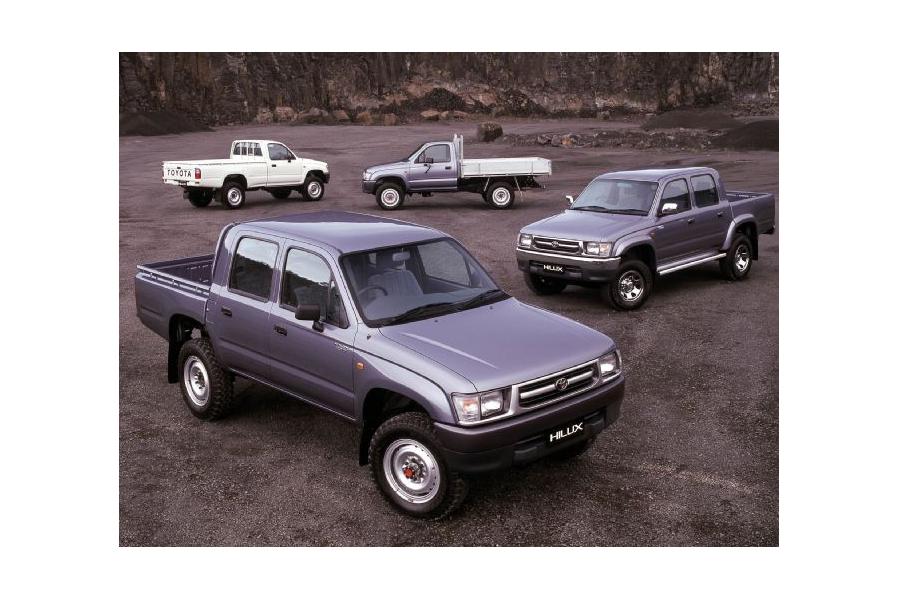Swipe to the left
Blog Posts

Truck Trend Legends: The Toyota Hilux
May 18, 2018
Truck Trend Legends: The Toyota Hilux
Indestructible
Colin Ryan –
May 18, 2018Some pickups are cool, but only a few achieve legendary status. The Toyota Hilux is one of those rare things that transcends its original purpose and becomes a cultural reference. The only trouble is that although the Hilux is considered special around the world, it hasn’t been on sale in the United States since the mid-1990s. Even then, it was often marketed as merely the “Toyota Truck.”
The rest of the planet, however, has a high opinion of the Hilux. It’s been built in places other than Japan—such as Uruguay, South Africa, Pakistan, Thailand, and even Germany (badged as a Volkswagen Taro). It’s one of Toyota’s best-selling vehicles, which is really something, given the humungous number of vehicles Toyota actually sells. From its introduction in 1968, the company says it has moved more than 17.7 million over eight generations of Hilux. South Africa and Australia account for around a million each.
Once the double-cab version arrived in 1979 as part of the third generation, along with the availability of four-wheel drive (the Hilux was solely rear-drive before that), people started using them as family transport as well. The name is a contraction of “high” and “luxury,” but there’s nothing particularly luxurious about this truck, unless it’s compared with its predecessor, the extremely basic Hino Briska. Hino was a small manufacturer that became absorbed into Toyota, but production of the Hilux continued at the same factory.
The Hilux is extremely good at what it does. It’s a compact work truck that really works. That’s why it’s popular in places like Australia. That country is home to some exceptionally harsh environments, from arid desert to sticky tropics. A no-nonsense truck that’s going to get its occupants safely back home is an absolute necessity. On top of that, people have driven Hilux trucks to both the North Pole and the South Pole. Specially prepared versions have raced—and placed—in the Dakar Rally.
It’s also known as the truck that won’t die. On the BBC’s Top Gear television program, a Hilux was subjected to all manner of abuse. Looking back on it, driving the truck down a flight of steps was way too polite. Crashing headfirst into a tree failed to stop it. Setting it on fire didn’t work either, nor did hitting it with a wrecking ball. It was left to be swallowed by a rising tide. When the waters receded, and after a mechanic was allowed to fix a few things with non-specialist tools and no replacement parts, it was driven away from the beach.
Next stop, the top of a high-rise building prepped for demolition. The dynamite goes off, the building crumbles, the Hilux is lifted out of the rubble, the mechanic goes in again, and the engine starts. Naturally, the vehicle was showing a few signs of wear and tear by this point, but if ever there was a Terminator equivalent of a truck, it’s the Hilux. The Top Gear crew even drove a newer one almost to the top of a live volcano spewing lava (the volcano, not the crew). The Hilux has also been a movie star, playing the role of Marty McFly’s dream vehicle in the Back to the Future movies.
Unfortunately, there’s a less benign association to the Hilux, especially where there are trouble spots. Armed insurgent groups probably have a fleet of Hilux trucks as well. Between December 1986 and September 1987, there was a conflict between Libya and neighboring Chad that became known as the “Toyota War” because many of Chad’s troops used the Hilux for transport. And bear in mind that most of their country is Saharan desert. Again, the appeal is because of that remarkable reliability, toughness, and the ability to be fixed using basic tools.
While Americans get to appreciate and drive around in the excellent Toyota Tacoma, everyone else has the eighth-generation Hilux, which was updated in 2017 and is the most sophisticated version yet. A lot of development took place in Australia—covering more than 400,000 miles over six years—so it’s not so surprising that the design includes useful ground clearance (11 inches), plus advantageous approach and departure angles. The frame is beefier than the previous generation and rear wheel articulation has increased by 20 percent. Even if the current Hilux is no longer such a rough-and-ready utility vehicle, only a fool would bet against its durability.


